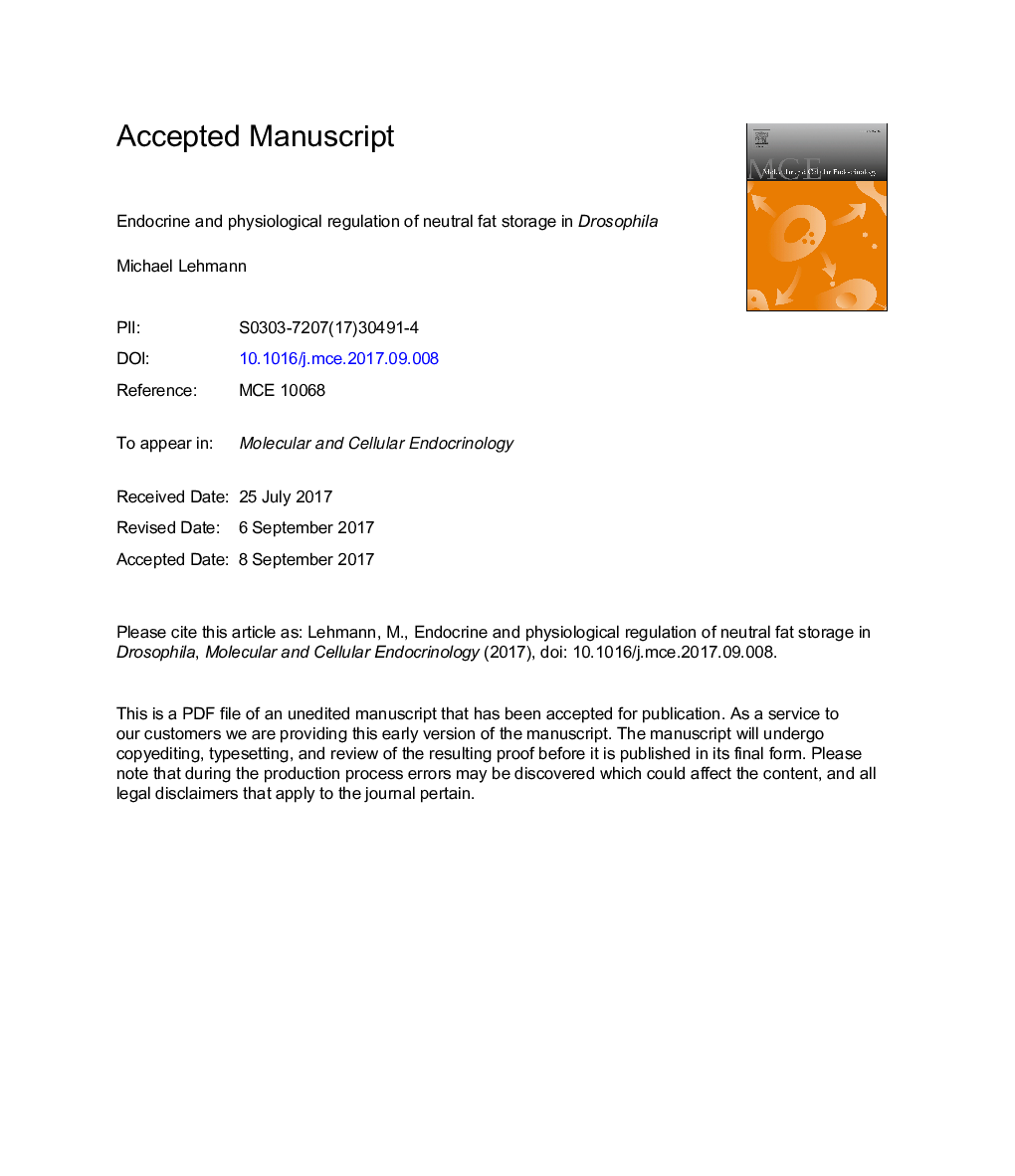| Article ID | Journal | Published Year | Pages | File Type |
|---|---|---|---|---|
| 8476559 | Molecular and Cellular Endocrinology | 2018 | 30 Pages |
Abstract
After having revolutionized our understanding of the mechanisms of animal development, Drosophila melanogaster has more recently emerged as an equally valid genetic model in the field of animal metabolism. An increasing number of studies have revealed that many signaling pathways that control metabolism in mammals, including pathways controlled by nutrients (insulin, TOR), steroid hormone, glucagon, and hedgehog, are functionally conserved between mammals and Drosophila. In fact, genetic screens and analyses in Drosophila have identified new players and filled in gaps in the signaling networks that control metabolism. This review focuses on data that show how these networks control the formation and breakdown of triacylglycerol energy stores in the fat tissue of Drosophila.
Keywords
PI3KSREBPDGATHSLINRPAPUSPECRIPCGPATInsulin-producing cellPPARBrummerBMMHDACDILPAGPATUltraspiracleUSHDrosophila insulin-like peptideTORU-shapedAKHEcdysonephosphatidic acidinsulintriacylglycerolTAG یا triacylglycerols HedgehogdiacylglycerolDiacylglycerol acyltransferaseDAGprothoracic glandphosphatidic acid phosphatasePhosphatidylinositol 3-kinasehormone-sensitive lipaseLipid metabolismObesityDrosophilatarget of rapamycinAdipokinetic hormoneJuvenile hormonehistone deacetylaseSterol regulatory element-binding proteinglycerol-3-phosphate acyltransferaseinsulin receptorEcdysone receptorperoxisome proliferator-activated receptor
Related Topics
Life Sciences
Biochemistry, Genetics and Molecular Biology
Cell Biology
Authors
Michael Lehmann,
